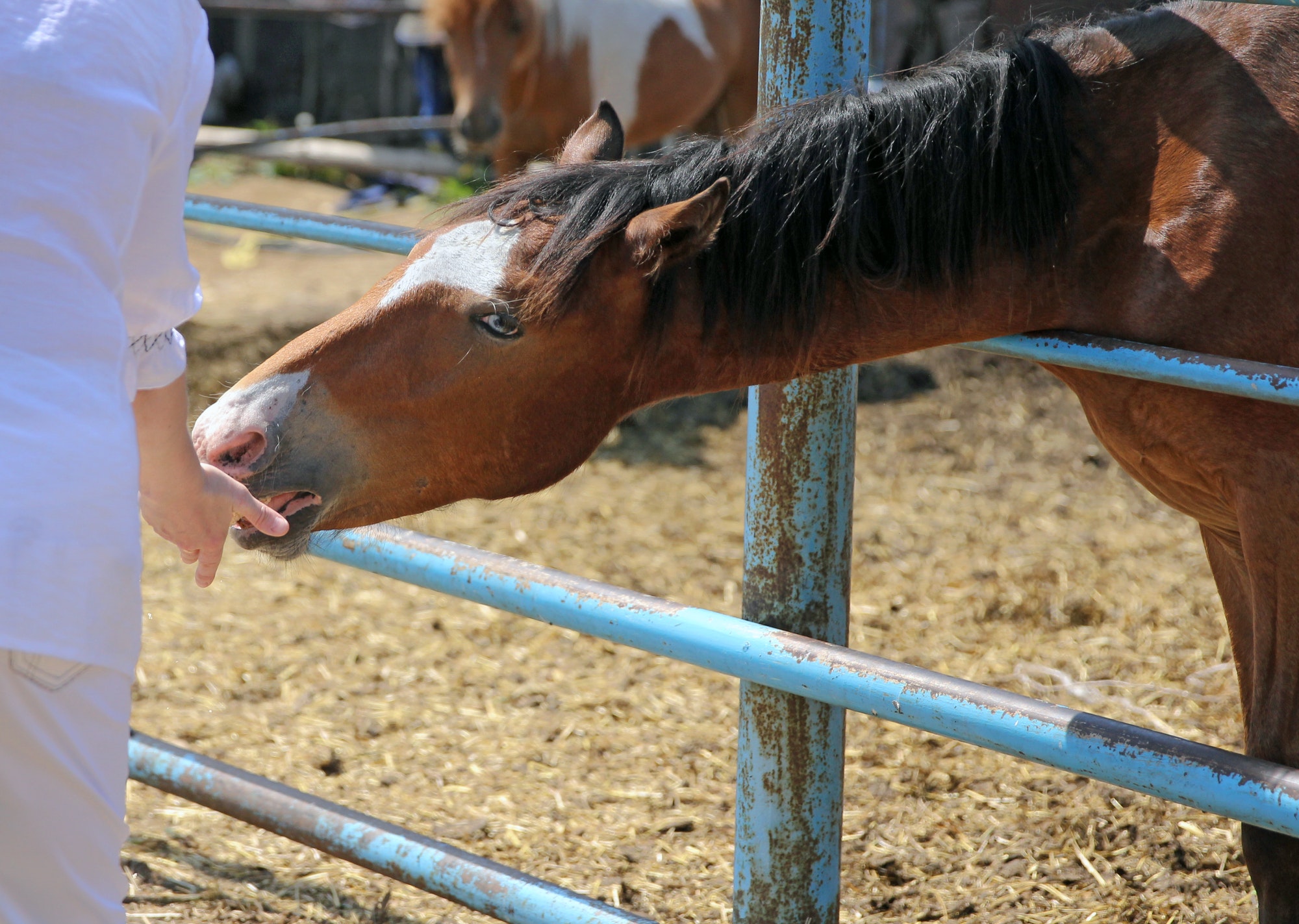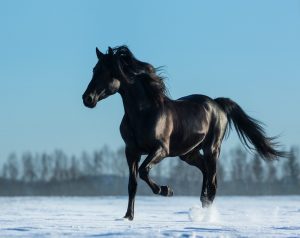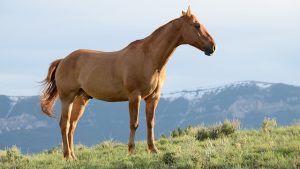Are you struggling in giving your horse a balanced diet? In this article, we’re going to discuss how to help your horses eat healthily and what you should avoid in feeding them. We’re also giving you hints about the rules you need to keep in mind and the essential nutrients that should be met when feeding your horse.
Horse’s unique digestive tracts are different from humans. But they could also suffer from overeating, which might cause obesity and laminitis and undereating that can make them look thin and unhealthy. Obesity is so common even in horses that are used for different competitions, and it affects 30-50% of the equine population. So, it’s vital to take caution with the dietary needs of your horse. But what are the healthy foods that are best for your horse? Let’s jump right into the facts.
Healthy Foods for Your Horse – What They Can Eat
1. Pasture Grass and Tender Plants
Pasture is the natural food for horses as it contains the nutrition your horse needs to be healthy. It also provides silica that is essential for the dental health of your horse. But problems can also occur if you won’t do it correctly.
If your horse has been eating hay or browsing on sparse meadow all winter, it could suffer from colic or laminitis if you will suddenly turn it into a lush pasture. On the other hand, overexposure to high carbohydrate grass can also cause metabolic syndrome like obesity, as well as diabetes and other cardiovascular diseases.
So it’s best to have a gradual transition from hay to pasture by giving it half an hour in the field and adding ten more minutes every day until it gets more comfortable. Nevertheless, high-quality pasture grass provides the best nutrition.
2. Good Quality Hay
When pasture grass is not available, horse hay is a good alternative. But it can be challenging to find good quality hay. It should be weed-free and free from molds and dust because it can make your horse sick. And you need to test it before feeding it to the horse to ensure that you can compensate for the lack of vitamins and minerals with some supplements.
Just like rich pasture grass, access rich hay must be moderated too, especially if your horse is an easy keeper because it can cause some health problems.
3. Some Grains
You may also feed your horse with oats, grains, and corn, but in moderation. Processed grains that we have now are not a natural food for horses, and it doesn’t contain silica that pasture grass does. It can cause ulcer and dental problems, and overeating grains can result in colic or founder. Wheat, which is also a type of grain, is also not suitable for your horse, so refrain from feeding it to your horse. It could save you from many health issues.
4. Concentrate mixes
In addition to grass and hay, concentrate mixes is also a good alternative since it can provide a quick source of energy, and it helps to make up with the lack of nutrition. A concentrate is a mixture of several ingredients such as grains, flaxseed, bran, beet pulp, vitamins and minerals, molasses(for energy and flavor), and more. There are plenty of commercial mixes out there that can meet your horse’s diet specification.
5. Salt and minerals
Salt and minerals are supplements that are either mixed with the concentrates or offered separately. Providing either a salt block or loose salt in a pasture or stall help horses to satisfy their cravings, and it is more consumed during summer months than winter.
6. Treats for your horse
Like humans, horses also enjoy treats once in a while. You can share it with your horse to thank you for its hard work or as a reward after training. Although nothing’s wrong with it, it is best to consider this guideline when selecting the type of treats, the feeding frequency, and amount:
- Choose healthy vegetables and fruits that are close to their regular diet so that their digestive won’t be upset.
- Feed only a small amount because feeding too much can cause an imbalance in their diet like decreasing protein content and the rise of starch levels and dilution of vitamins and minerals. It can also result in a severe digestive upset to colic or laminitis. So always remember the acronym A.I.M. which means “Always In Moderation.” For example, two carrots are sufficient for an average size horse.
- Treats are only special if they are only available once in a while, so feed sparingly.
Here are some of the healthy treats for your horse:
- Healthy fruits and vegetables such as apple slices, carrots, hay cubes, or banana
- Sugar cubes can also be a treat, but it is very healthy for the horse.
- Commercially made horse treats are also beneficial because it provides more nutrients for traveling than fresh fruit and vegetables.
7. Water
Horses don’t really eat water, but it’s essential for their diet. Whether your horse eats pasture or hay, fresh and clean water is necessary for both. Insufficient water can result in chronic dehydration, which causes weight loss and poor health conditions.
You also have to make sure that your water and watering equipment is clean because if it is unhygienic like in troughs and buckets, bacteria and viruses can live in it and make your horse sick. If your horse is working hard or sweating, expect that they will drink more.
Toxic Foods for Your Horse – What They Shouldn’t Eat
1. Stone fruits – unpitted stone fruits can cause your horse to choke.
2. Chocolate or other sugary foods –your horse might enjoy it, but high sugar foods are not necessary, and it could lead to health problems like obesity. It can also cause a positive result in a drug test.
3. Vegetables that belongs in the cabbage family – like turnips, cabbages, kale, cauliflower, broccoli, and brussels sprouts can cause a feeling of discomfort in your horse and will make them very gassy if fed in large amounts.
4. Potatoes and tomatoes – these are members of the Nightshade family, and it is best to avoid these.
5. Bread, donuts, and cakes – these can cause a blockage in their digestive tract.
6. Meat – it can be harmful to your horse in the long term, and it is not necessary from a nutritional perspective since horses are herbivores.
7. Garden waste – feeding your horse with lawn clipping is risky because it can contain poisonous plants and toxins from garden sprays. It can also cause choking and drastic changes in the pH of the hindgut.
8. Moldy or dusty hay – this can damage your horse’s lungs.
9. Brans – are not suitable for horses and should be avoided unless they are needed for a specifically prescribed diet.
Five Rules to Adhere When Feeding Your Horse:
1. Meet the Basic Needs
For you to be successful in providing the basic needs of your horse, you need to have a feeding plan, and it includes the following nutrients:
- Carbohydrate – It is most likely the most significant part of your horse’s diet, which has two groups. The first one is structural (fiber) carbohydrates that mostly come from roughage that your horse eats, such as hay or pasture grass. The second one is the nonstructural carbohydrates, which are mainly sugar and starches found in grains like corn, oats, and barley. Ideally, you should feed your horse with forage in for about 1.5 to 2% of its body weight, but the minimum is 1% (on a dry basis). Feeding less roughage than this can cause health issues such as colic and ulcers.
- Protein – This nutrient is necessary for body growth and maintenance. Mature horses may settle with a lower protein percentage, which is about 8-12%, but growing horses need more protein because they need to develop muscle tissue, but they can do well with 12% protein feed. Feeding horses with higher levels of protein is also not good because the horse will break down the excess protein and excrete it as urine, which will be converted into ammonia that can lead to some respiratory problems in stabled horses.
- Fat – It is an excellent and easy-to-digest source of energy for your horse. Commercial feeds with no additional fats contain approximately 2-4% fat, but feed supplemented with fat in the form of some kind of stabilized oil provides 2-12% percent. Adding fat to your horse’s feed increases its energy density; therefore, it will require less feed.
- Vitamins – This is a critically important compound that has two categories. The first one is the water-soluble group, which consists of B-complex vitamins like B1, B2. And the other one is the fat-soluble group comprised of vitamins A, E, D, and K. Your horse needs to have enough vitamins, but too much is not desirable either. In most cases, a good forage combined with some concentrates can provide adequate vitamins for your horse’s body.
- Minerals – Your horse needs an adequate amount of this critical organic material to help its body function properly. You can find it in supplements on feed and tack store shelves. If your horse mainly feeds on forage, a loose vitamin or mineral premix, or a ration balancer is a good option. Expect that your horse will consume 1.5 to 3 oz. of the mixture per day.
- Water – An average, healthy horse can consume about 5-15 gallons of water per day depending on the temperature, humidity, and activity level. You should provide clean water that is accessible at all times for your horse to drink when it’s thirsty, but if it’s not possible, you can give water at a minimum of twice daily. Then, allow it to drink for several minutes. Lack of water in the horse’s body can lead to dehydration, intestinal impactions, and other forms of colic, that’s why it’s critical for your horse’s health.
2. More Forage
Hay or pasture is the most significant part of your horse’s diet, and 70% of your horse’s daily calories should come from either of the two. A good-quality forage can provide the nutritional requirements of your horse, so it would be better if it would spend more time eating because it is beneficial for his brain and gastrointestinal tract.
3. Make It Small
The stomach of your horse can only hold between two to four gallons of material at any given time. It spends 16 hours per day grazing in its natural environment, which means it would be best for your horse’s health if you will feed it frequently in a small amount if it can’t browse full time in the meadow. If your horse spends most of its time inside or in a dry lot, the ideal feeding frequency is four times a day but still in a small amount. But, if you find it difficult to feed this often, you can opt to put the hay in a slow feed hay net to make feeding time take longer.
4. Control the Quality
Since pasture or hay is the foundation of your feeding plan, you need to take control of the quality. As we already mentioned above, hay should be free from weeds, molds, and dust and stored in clean storage. You should also maintain the pasture so that your horse can get all the needed nutrition from it. That means you need to test and fertilize the soil and take out weeds.
5. Trust the Experts
Whether you’re feeding a mare and foal, a senior horse, or your equine athlete, choose a ration designed by a Ph.D. because they know a lot more than any of us about equine nutritional needs. These nutritionists studied and spent hours in formulating commercial rations that provide the needs of your horse. So why not learn from these experts?





